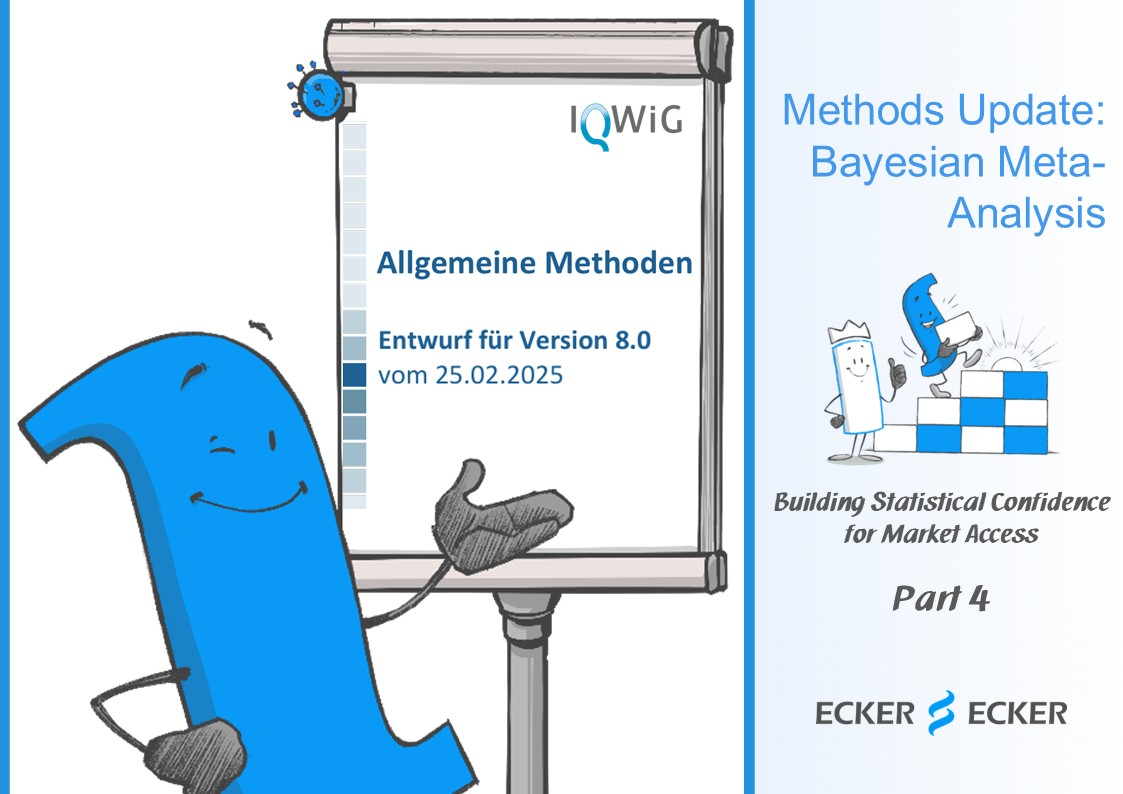Methods Update

🚀 IQWiG Methodology Update: Bayesian Approaches for Meta-Analyses with Few Studies
In our last post, we discussed fixed and random effects models in meta-analysis. But what happens when only 3 to 4 studies are available?
The Challenge:
📌 Fixed-effects models are no longer appropriate, as the assumption of homogeneity is usually not met.
📌 Random-effects models are generally suitable, but with only a few studies, it is difficult to precisely estimate between-study heterogeneity. This results in wide confidence intervals, reducing the reliability of the conclusions.
The Solution: Bayesian Meta-Analysis!
💡 The newly released draft of IQWiG's Methods Paper Version 8.0 introduces a Bayesian approach as part of the standard methodology for meta-analyses with few studies (https://www.iqwig.de/ueber-uns/methoden/methodenpapier/ ➡️ section 10.3.7).
How Does It Work?
✔️ For effect measures such as SMD, Odds Ratio, Relative Risk, and Hazard Ratio, a Bayesian meta-analysis is now recommended.
✔️ Non-informative priors are used for the treatment effect, while informative priors are applied to the heterogeneity parameter τ (following Lilienthal et al.).
✔️ Additionally: A qualitative summary of study results should be conducted using the concept of concordant effects.
For other effect measures, decisions should be made on a case-by-case basis, considering alternative methods such as Knapp-Hartung or a qualitative summary of study results.
Why Is This Important?
🛠️ This update to IQWiG’s methodology marks a significant improvement in statistical approaches for market access. More precise effect estimation, even with few studies, leads to more robust conclusions in early benefit assessments.
🚀 At Ecker + Ecker GmbH, we welcome this development and are excited to see the expansion of IQWiG‘s statistical toolbox!